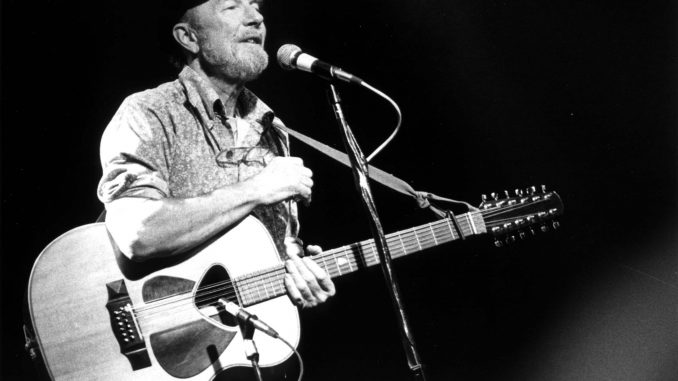
One Quiet Plunge, “an organization devoted to new music performances in the Hudson Valley,” celebrated and performed the music of Pete Seeger and Ruth Crawford Seeger in different styles of music at the Samuel Dorsky Museum. They aptly titled it, “Seegers.”
“This concert grew from the overlapping and diverging strands of Pete and Ruth Crawford’s lives,” said One Quiet Plunge director Joshua Groffman.
Pete Seeger was an iconic American folk songwriter and singer, who resided in Beacon and was well known for his songs such as “Little Boxes,” “Turn! Turn! Turn!” and “Where Have All the Flowers Gone?” He died on Jan. 27, 2014 at the age of 94.
His stepmother, Ruth Crawford Seeger, was an American composer, music teacher and musicologist during the early 20th century. She played a key part in the American modernist movement in the 1920s and the revival of American folk music. As a young pianist, Crawford Seeger was encouraged to compose original works. Some of her earliest work was composed for children. Exposed and influenced by new music, she developed her own unique style, which can be heard in “Piano Preludes (1924).”
“She was a pioneering composer and as a female composer she was the first woman to win a Guggenheim Fellowship and classical music is still a little more diverse than it could be, so the fact that there is a trailblazing female composer, I feel like that’s something to talk about and highlight that more,” Groffman said.
Projected on the walls behind the performers were two videos produced by students. FlowrPowr by Anneli Goeller was based off of Pete Seeger’s environmental activism in the Hudson Valley and his song “Where Have All the Flowers Gone?,” and turn! turn! turn! by Gabriel Chalfin-Piney, Emily Glascott and John Owens was a collection of film footage of places shared by Seeger.
Performing the music was Groffman on banjo, music faculty member Bob Lukmoski on electronics, Amy Cassiere on oboe and Chris Beroes-Haigis on cello. They played six of the Seegers’ music, including “Towards the Horizon” from Bridge Music, “Clap Your Hands, no. 1-5,” “Diaphonic Suite No. 4,” “Developing Variations on ‘Sweet Water Rolling,’” “Lineage” and “Landfall” from Bridge Music.
“[The concert] was built around Ruth Crawford Seeger’s ‘Diaphonic Suite,’ which was for cello and oboe, so I knew I wanted to do that piece and then there were new commissioned pieces by Gabriel Lubell and Nathan Hall for cello and oboe solos,” Groffman said. “Banjo is just so associated with Pete Seeger that I wanted to have the sound of the banjo without having traditional banjo music.”
The most intriguing piece was Lineage by Nathan Hall, which was written as a three-movement cello solo. Each movement is titled and related to a different aspect of Ruth Crawford’s legacy.
“The first movement, ‘Modernist,’ examines her early career as an ‘ultra-modern.’ ‘An Editor, A Collaborator,’ grows from her later work on folksong. The third movement, ‘My Son Peter,’ sets a text by Pete to original music,” states Groffman in the program notes.
Beroes-Haigis bowed on his cello with passion and emotion, crescendoing and decrescendoing to paint Crawford Seeger’s life through his musicality, especially in the second movement. The third movement incorporated the words to Pete Seeger’s song “Last Train to Nuremberg.” Beroes-Haigis used a bowing method called tremolo, or rapid back and forth movement of the same note, and sang at the same time.
“Who held the rifle? / Who gave the orders? / Who planned the campaign to lay waste to the land? / Who manufactured the bullet? / Who paid the taxes? / Tell me, is that blood upon my hands? / Last train to Nuremberg!”
“There was this really cool concert to be made at the connection between folk music and political activism and environmental activism and then classical music, which is often very divorced from all of those things,” Groffman said.
